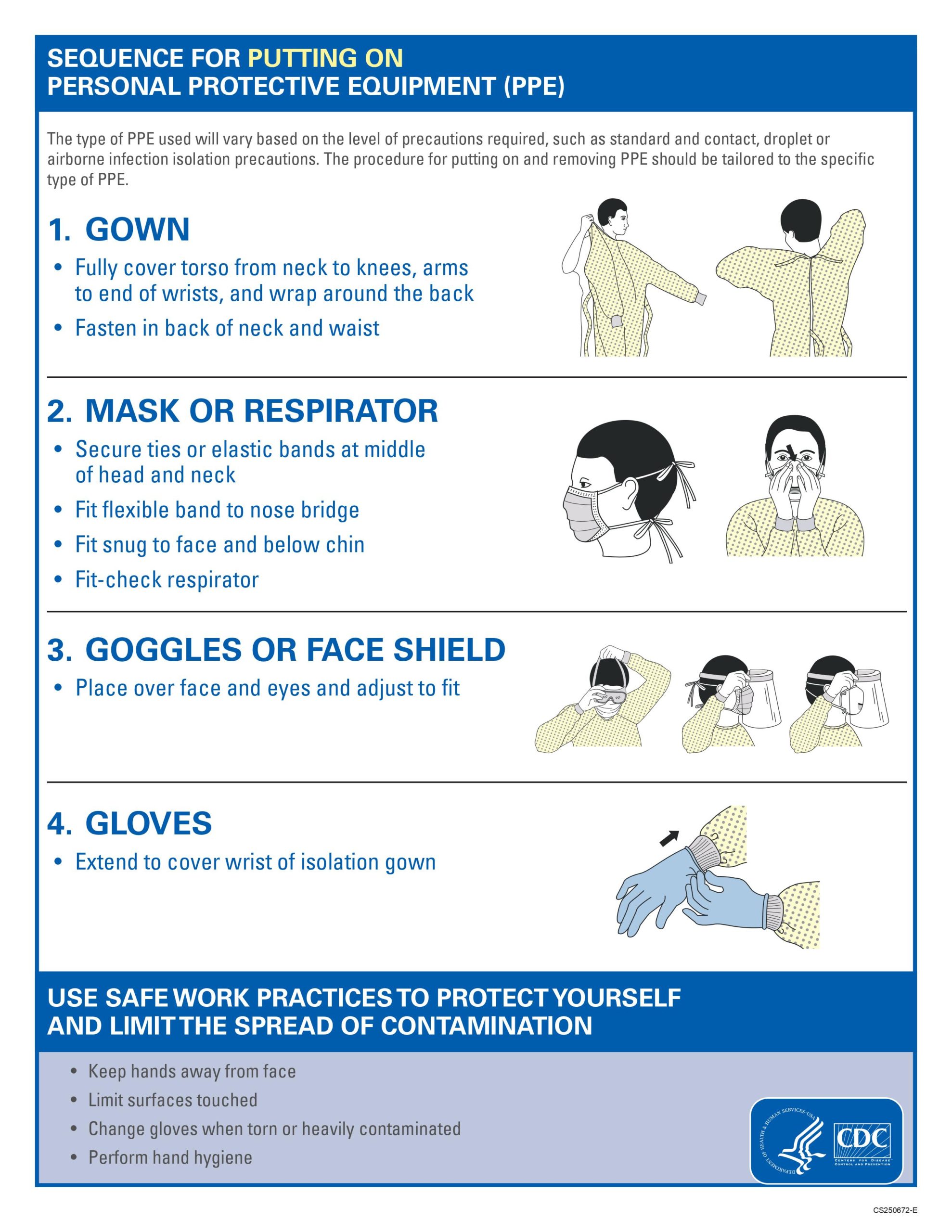Infection Control Basics, COVID19 & PPE for EMS Providers
 COVID19 has changed the way we operate and the way we think about infectious diseases. Suddenly, infectious diseases have become the most interesting topic in our lives.
COVID19 has changed the way we operate and the way we think about infectious diseases. Suddenly, infectious diseases have become the most interesting topic in our lives.
For a quick second, think about your work-life prior to COVID19. Next, think about how much change has happened since the virus hit. By now your hands are probably chapped and cracking from washing them so much, the bridge of your nose is probably bruised from the pressure of your N95, and you’ve probably sweat through every one of your uniforms from wearing gowns. Personal protective equipment has now proven its worth and its importance has been emphasized. As we continue to navigate this virus, we all play a pivotal role in protecting ourselves and our patients.
COVID19 spreads through respiratory droplets or from contaminated surfaces where the virus can survive for various times depending on the makeup of the surface. Some people with the virus are asymptomatic and some are symptomatic. Symptoms range from a mild illness to a severe respiratory infection that can lead to pneumonia or cardiac collapse. Current data supports the fact that COVID19 has a higher mortality rate than common viruses such as influenza and other strains of coronavirus. Once this first wave passes, we will have a better understanding of the mortality rate.
It’s important that we continue to follow CDC guidelines for personal protective equipment. Hand hygiene is of utmost importance with COVID19. It’s important not only to wash your hands but wash them frequently. In the hospital setting, we disinfect our hands before entering a patient’s room and after we finish with the patient. In EMS, it’s more common to disinfect after leaving the patient although many services have a policy to do both. With the introduction of this virus, it’s probably a good time to adopt the policy of using disinfectant before entering a patient’s home and after finishing with a patient, much like our hospital counterparts.
Next, we have to understand the use of gloves, gowns, masks, and eye protection. Remember that respiratory viruses like COVID19 can enter through our T-zone. For those who aren’t familiar, our T-zone is our eyes and inferiorly our nose and mouth. By properly wearing our mask and our eye protection, we can stop those viruses from entering our T-zone. Also, as I mentioned, the virus itself can live on surfaces, hence the use of gowns and gloves. We want to make sure that when the call is over we aren’t bringing the virus back to the station or home with us. We also must fully understand the proper methods of donning and doffing. If we are wearing full PPE but aren’t putting it on correctly or removing it correctly, we are really defeating the purpose. The CDC provides a great resource for review, which you will find below. This is something that you should consider hanging up at your station:



References
Healthcare Providers: Hand Hygiene. Centers for Disease Control and Prevention. https://www.cdc.gov/handhygiene/providers/index.html. Published 2021. Accessed March 31, 2021.
Healthcare Workers. Centers for Disease Control and Prevention. https://www.cdc.gov/coronavirus/2019-ncov/hcp/infection-control-recommendations.html. Published 2021. Accessed March 31, 2021.
 Chris Troxell is a paramedic with 16 years of experience in EMS. Currently, Chris serves as the Emergency Department Director, Safety Officer, and Emergency Preparedness Coordinator for Critical Access Hospital in central Illinois.
Chris Troxell is a paramedic with 16 years of experience in EMS. Currently, Chris serves as the Emergency Department Director, Safety Officer, and Emergency Preparedness Coordinator for Critical Access Hospital in central Illinois.



